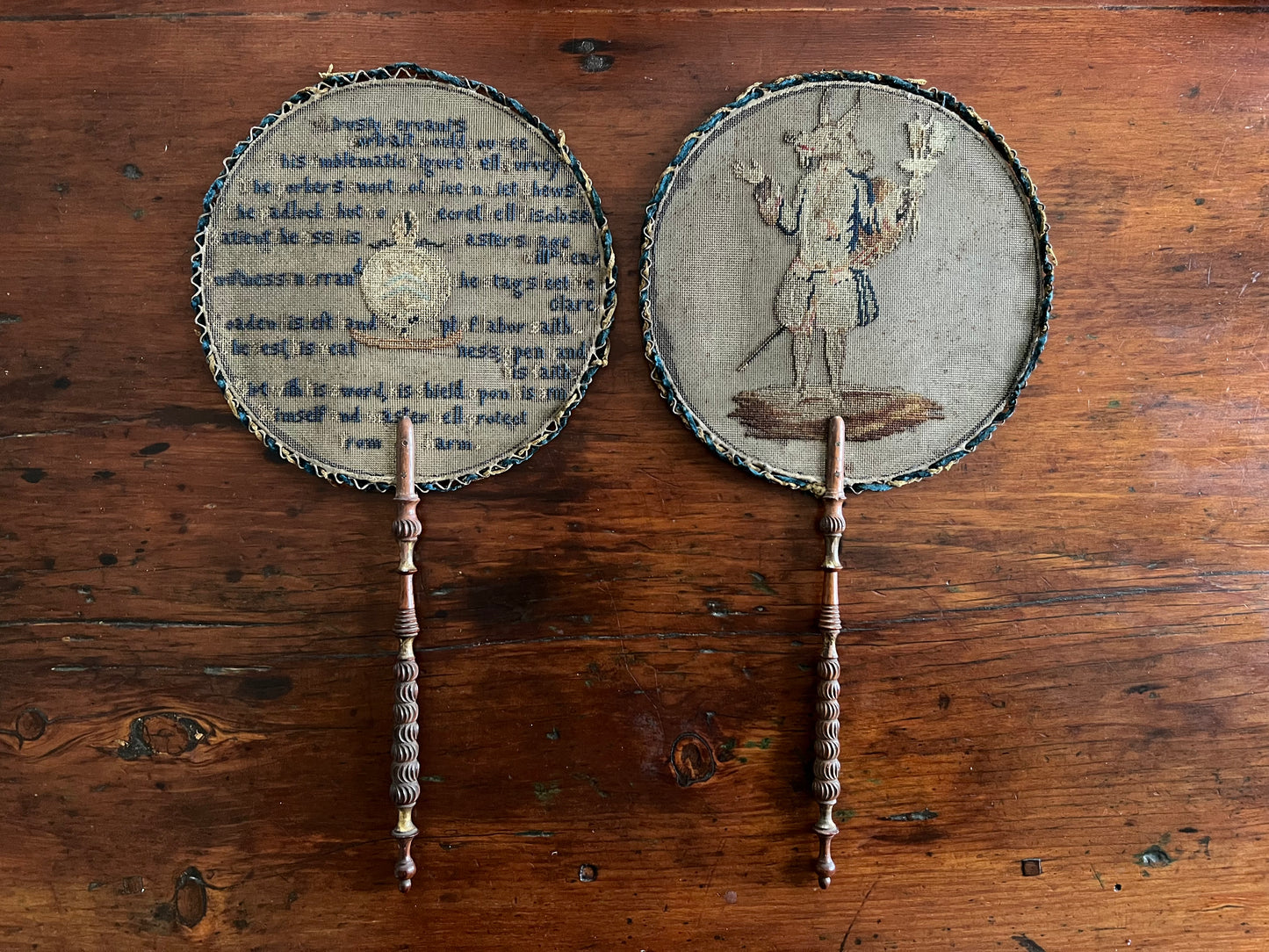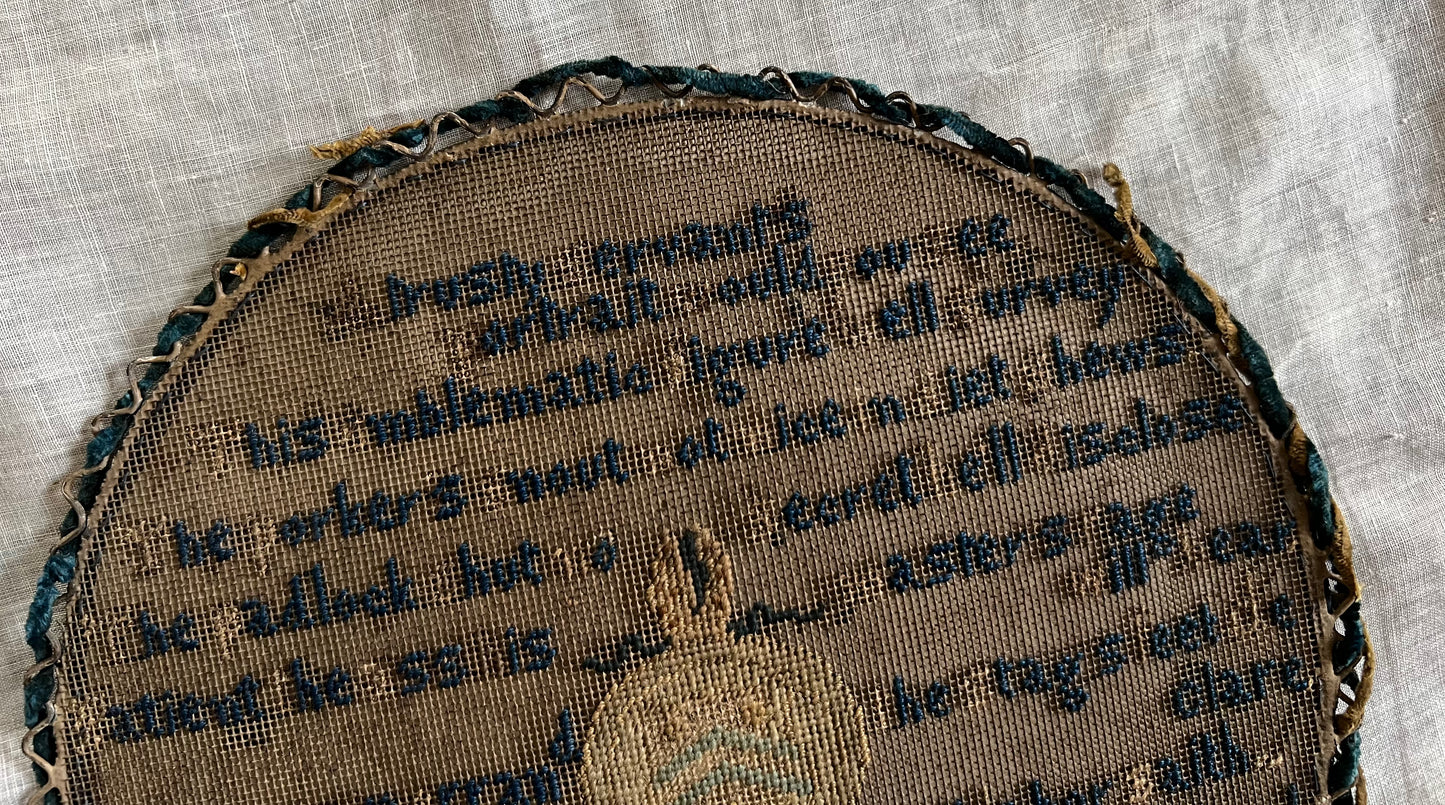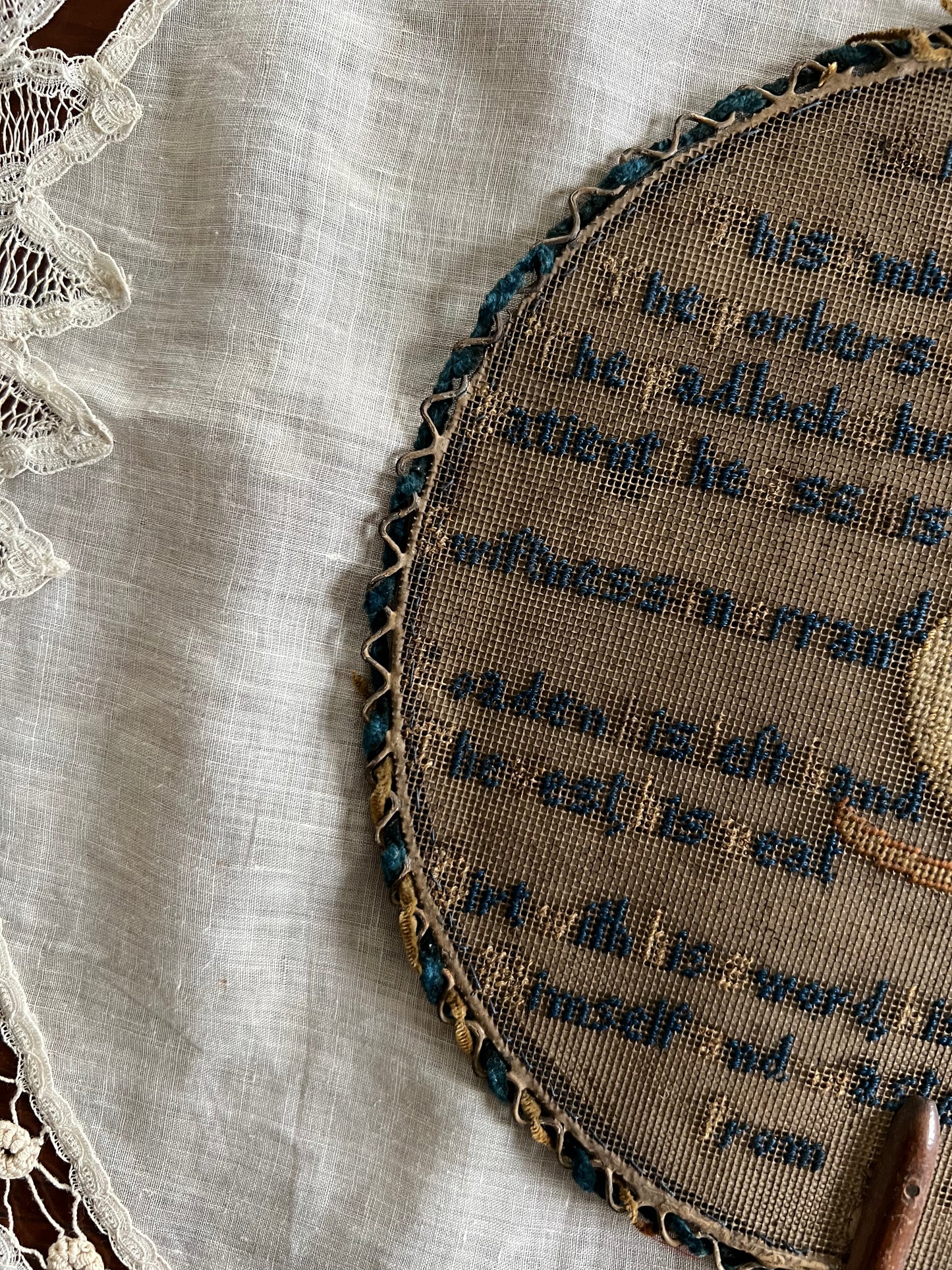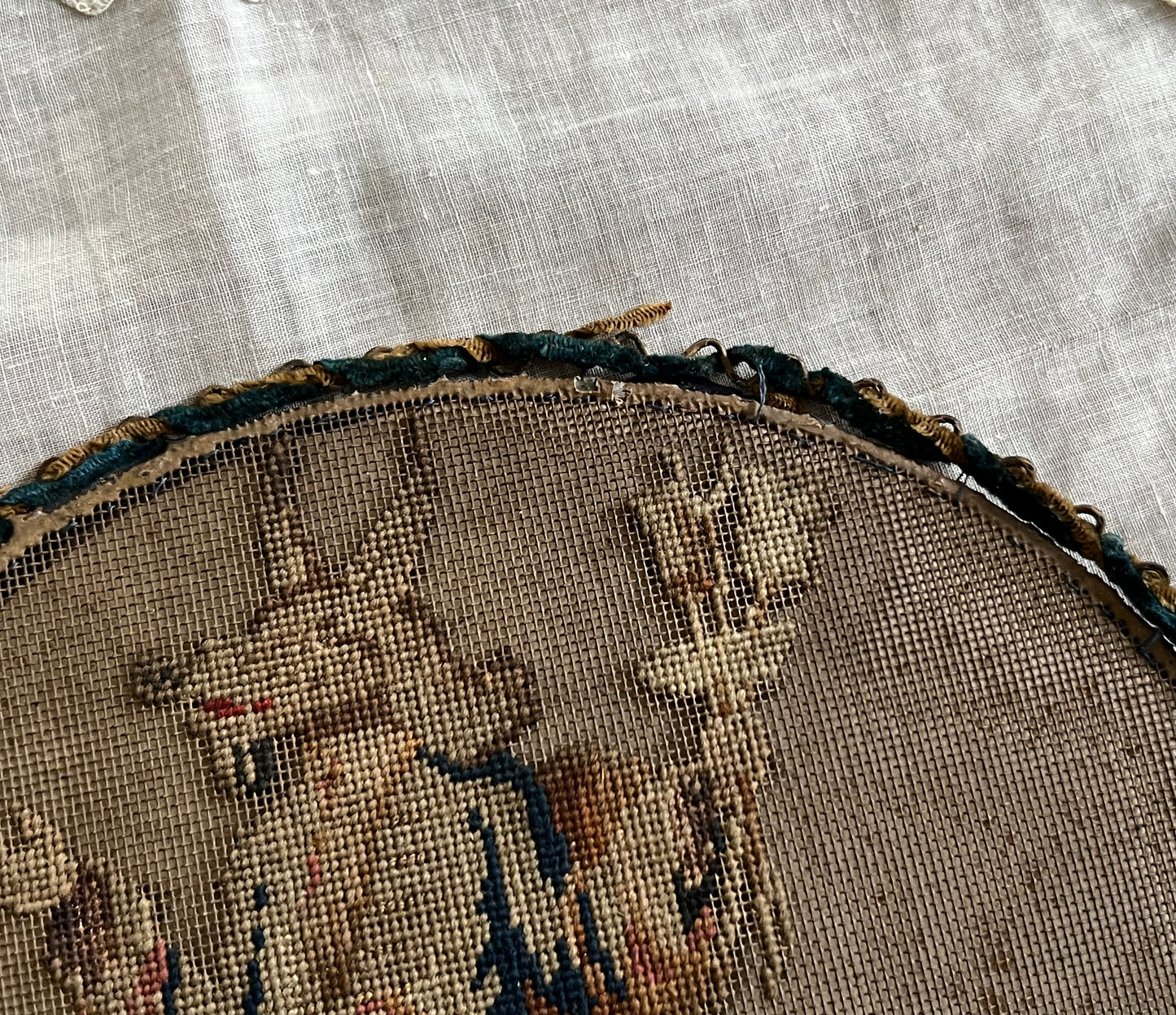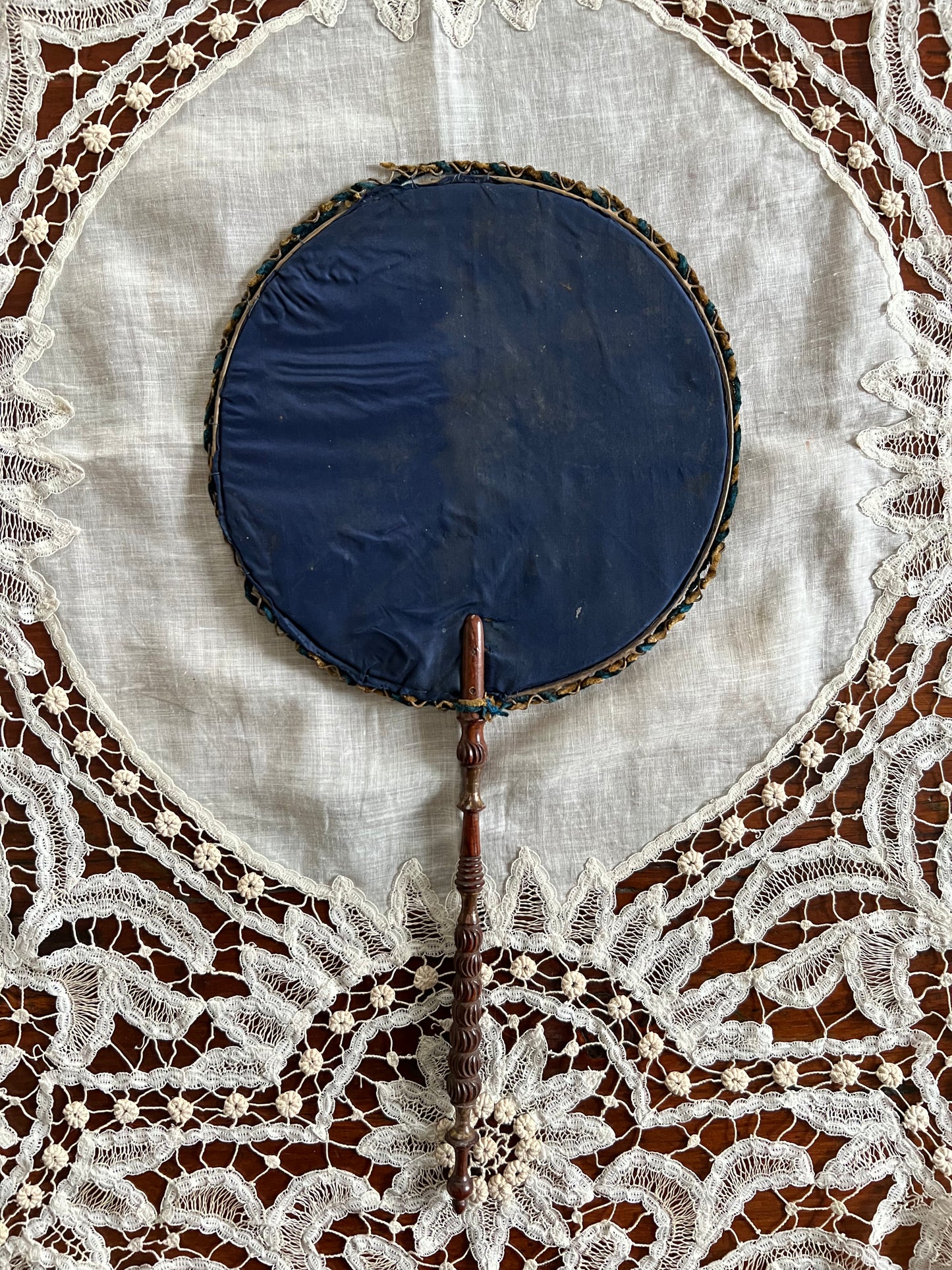Everthine Antiques & Stationery
A Pair of English Georgian Face Screens - Trusty Servant - Winchester College, Hampshire
Couldn't load pickup availability
Two is better than one, and in this case, both are needed to tell the story.
For your consideration are two English Georgian face screens, one with an embroidered image of a figure, part man, part porker, part deer, and part donkey (I'll get to that later), and the other with an allegorical verse stitched into the screen. I believe these face screens could have been a gift for a student or faculty member, possibly a woman of Winchester College in Hampshire, England (you will understand why I assume a few of these things below).
What are face screens, you ask?
In the late 18th through 19th century, face screens were used by elite women who frequented fancy soirees (often lit by candles and open fires), to protect their make-up from heat and smoke. Their makeup formulas were not like what we have today, so it was important for them to maintain their appearance. Facescreens were also used to avoid disagreeable encounters and chat in private with friends.
The Trusty Servant - Winchester College
"The Trusty Servant is an emblematic figure in a painting at Winchester College and the name of the college's alumni magazine.
The wall painting called The Trusty Servant, painted by John Hoskins in 1579.[1] It hangs outside the kitchen of Winchester College in Hampshire, England. The American author Arthur Cleveland Coxe (1818-1896) described "the time-honoured Hircocervus, or picture of 'the Trusty-servant,' which hangs near the kitchen, and which emblematically sets forth those virtues in domestics, of which we Americans know nothing. It is a figure, part man, part porker, part deer, and part donkey; with a padlock on his mouth, and various other symbols in his hands and about his person, the whole signifying a most valuable character."[2] Strictly speaking, the Trusty Servant is not a hircocervus, which is a combination of a goat and a stag: Coxe is using the term loosely to mean a composite animal in general.
The painting of The Trusty Servant had a didactic function: it is accompanied by allegorical verses that associate the servant's various animal parts with distinctive virtues that the students of Winchester College were meant to follow.[3]
A Trusty Servant's Portrait would you see,
This Emblematic Figure well Survey.
The Porker's Snout not Nice in diet shows;
The Padlock Shut, no Secrets he'll disclose;
Patient the Ass, his Master's wrath will bear;
Swiftness in Errand, the Stagges feet declare;
Loaded his left Hand, apt to Labour saith;
The Vest his Neatness; Open hand his Faith;
Girt with his Sword, his Shield upon his Arm,
Himself and Master he'll protect from Harm."
What a story, right?
Details:
- Handmade turned handle (gilding in parts has faded)
- Needlepoint screen (lighter letters are faded)
- Velvet ribbon surrounding the hoop (wear to ribbon, some has frayed or us missing)
- The back is covered in what I believe to be silk
- 15.5" x 8"
The Trusty Servant. (2021, January 28). In Wikipedia. https://en.wikipedia.org/wiki/The_Trusty_Servant



